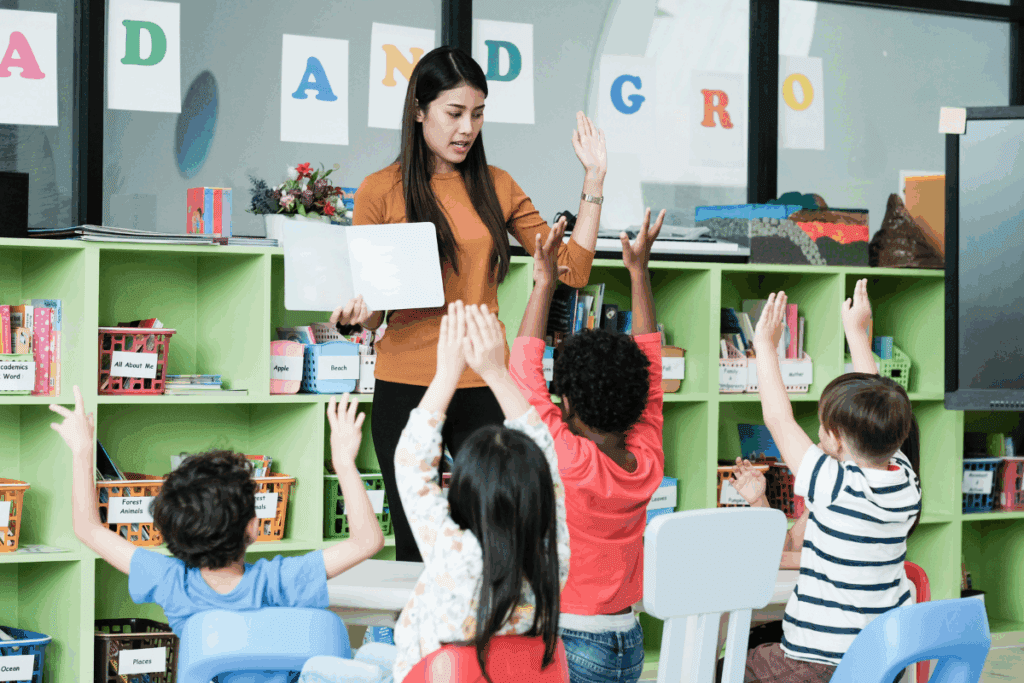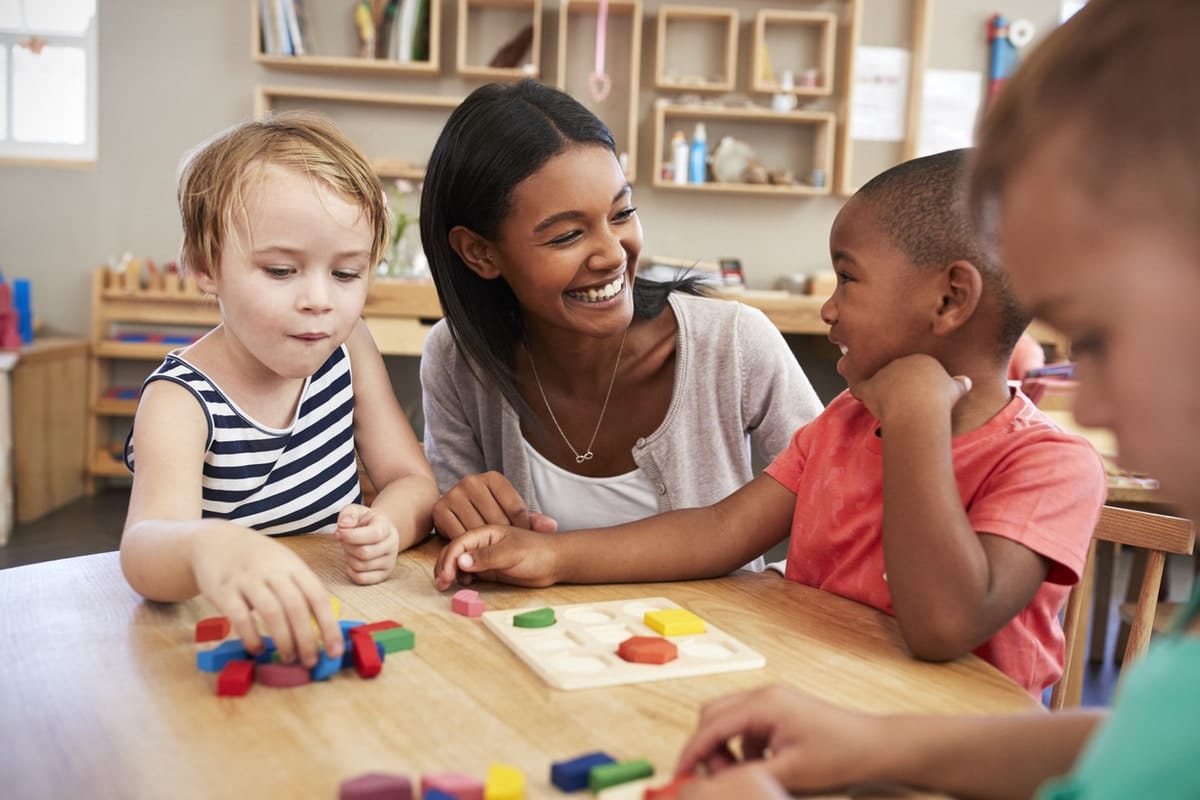Last Updated on November 24, 2025 by

Assessment tools in early childhood are standardized methods used to check how young children grow. They look at their thinking, social, emotional, and physical skills. These tools are key to finding out what children need and how to help them grow best.
Early childhood assessment is a key tool for learning about a child’s growth. It helps teachers, parents, and families understand more about a child’s development. By using early childhood assessment tools, experts can make better choices. This improves the quality of care for kids in any program for kids aged 3-5 informally.
Assessment tools are key in early childhood development. They help teachers spot where kids might need extra help. These tools are essential for tracking a child’s growth and figuring out if they need special support.
In early education, assessment means watching and recording a child’s skills, knowledge, and actions. It helps teachers see what a child can do and what they know. This ongoing process shapes how teachers teach and supports kids’ growth.
When teachers assess, they learn about a child’s strengths and what they might struggle with. This info is key for creating special plans to help each child.
Assessment helps in providing support by showing how kids grow in different areas. This includes thinking, moving, speaking, feeling, and learning. It helps teachers spot kids who might need help early on.
The Assessment, Evaluation, and Programming System (AEPS-3) is a trusted tool. It’s backed by decades of research and helps teachers see how young kids are doing.
By using these tools well, teachers can make smart choices about what kids need. This helps kids grow and get ready for school.
Early childhood assessment looks at many areas important for success later on. The developmental assessment of young children checks several key areas. It gives a full picture of a child’s growth and development.
Watching and recording a child’s work over a year helps an educator see their growth. This long-term view shows how a child is doing in different areas.

Cognitive development is how children get, process, and use information. Language development is about understanding and talking through words and actions. Tests in these areas check problem-solving, memory, and language skills.
The IDELA (International Development and Early Learning Assessment) is used worldwide. It checks skills from ages 3.5 to 6. It looks at cognitive and language skills, helping to see if a child is ready for school.
Social-emotional development is key in early childhood. It helps children make friends, control their feelings, and know who they are. Tests in this area see how well a child interacts, manages feelings, and shows empathy.
“The way we assess and support social-emotional development can have a lasting impact on a child’s ability to succeed in school and beyond.”
Physical and motor skills are also important in early childhood. This includes big movements like running and small movements like drawing. Tests in this area find any delays or needs for extra help.
By checking these main areas, teachers and caregivers understand a child’s full development. This info is key to helping each child grow and succeed.
Standardized tests are key in checking how preschoolers grow. They show what a child is good at and what they need to work on. This helps teachers make plans just for that child.
The Battelle Developmental Inventory (BDI-3) checks many areas of a child’s growth. It looks at thinking, moving, and feeling skills. It’s great for spotting small changes in a child’s progress.
The BDI-3 gives a full picture of a child’s strengths and areas to improve. It lets teachers and caregivers see how a child compares to others. This helps find out who might need extra help.
The Assessment, Evaluation, and Programming System (AEPS-3) is a big help in early childhood checks. It looks at kids from birth to 6 years in many areas. This includes moving, feeling, and acting like others.
The AEPS-3 is special because it links to plans for helping kids. It helps teachers make programs just for kids aged 3-5. It finds out what a child is good at and what they need to get better at.
The Early Childhood Assessment and Development (ECAD) tool checks how young kids are growing. It looks at thinking, feeling, and moving skills. ECAD is good for a full look at how a child is doing and helps shape education.
Using tools like the BDI-3, AEPS-3, and ECAD ensures checks are fair and right. These tools are key in programs for kids 3-5. They give a clear way to see how a child is growing.
More countries are using international assessment frameworks to check how young children are growing. These tools help make sure kids get the help they need to do well.
The International Development and Early Learning Assessment (IDELA) is used in over 100 countries. It checks kids’ skills from ages 3.5 to 6. It looks at emergent literacy, numeracy, and social-emotional development, helping see if kids are ready for school.
IDELA works well in many places because it’s culturally sensitive. It’s great for groups and governments wanting to boost early learning worldwide.
The World Bank says it’s hard but key to assess kids in tough places. Their studies show the need for contextually relevant assessment practices. These must handle the challenges of different places.
They also point out the need for tools that work in many cultures and economic levels. This is key for helping young kids in hard spots.
Using frameworks like IDELA and World Bank insights helps understand young children’s needs globally. This is vital for creating effective early childhood education programs for kids everywhere.
Informal assessments are key for educators planning in the early childhood classroom, for kids aged 3-5. They give a real view of a child’s skills and what they need.
Methods like watching children naturally and keeping their work in portfolios are important. They help teachers see how kids are doing fully.
Play-based methods are great for young kids. They watch how kids play to see their thinking, social, and physical growth.
Informal screening tools help find kids who might need extra help in preschool. They are less formal than tests and give teachers a peek into kids’ growth.
Using these methods, teachers can make assessments in early childhood settings that are detailed and help each child grow in their own way.
Authentic assessment in early childhood education gives a full picture of a child’s skills.
It uses methods that fit the child’s development, culture, and language. This way, assessments truly show what a child can do. Educators get to really know how each child is growing.
Observation-based assessment is key in authentic assessment. Teachers watch children during activities. This helps them understand what children know and can do.
Key aspects of observation-based assessment include:
Portfolio assessment collects children’s work over time. It shows a child’s growth and learning journey.
Effective portfolio assessment includes:
Documenting learning processes is important in authentic assessment. It captures how children learn and solve problems.
This can be achieved through:
By using observation, portfolio, and documentation, educators can fully assess children. This helps in teaching and makes learning focused on the child.
Choosing the right assessment tool is key to understanding a child’s growth and helping them improve. Each early childhood program has its own needs. It’s important to know what to measure and pick the best tool for those goals.
Good assessment in early childhood education looks at the child’s needs, culture, and language. This way, teachers can pick early childhood assessment tools that really get to know the child.
Programs need to look at all their options carefully. This helps them pick the best tools for their specific needs. Making this choice well lets teachers get the right data. This data helps the child grow and develop in all areas.
Assessment tools in early childhood help measure a child’s growth. They look at things like thinking skills, physical abilities, language, social skills, and learning approaches. These tools help teachers understand how a child is doing and make good choices for their education.
These tools are key because they help teachers spot kids who might need extra help. They show how a child is growing in different areas. This helps teachers support kids better.
Assessments check on thinking and language skills, social and emotional growth, and physical and motor abilities. These areas are important to see how a child is doing overall and where they might need extra support.
For preschoolers, tools like the Battelle Developmental Inventory (BDI-3) and the Assessment, Evaluation, and Programming System (AEPS-3) are used. They give a full picture of a child’s strengths and areas for improvement.
Frameworks like the International Development and Early Learning Assessment (IDELA) help compare how young children develop worldwide. They show the need for assessments that fit different cultures and settings.
For kids aged 3-5, methods like play-based assessments and simple screening tools are used. These give a real and natural look at a child’s abilities and needs.
Authentic assessment in early childhood education uses methods that fit the child’s development, culture, and language. It includes things like observing, using portfolios, and documenting learning. These methods give a true picture of a child’s growth.
Teachers pick the right tools by thinking about the child’s needs, culture, and language. This ensures they get a full view of the child’s abilities and needs.
Assessment is very important in early childhood education. It helps teachers understand a child’s development, find areas needing extra help, and provide support for growth.
Subscribe to our e-newsletter to stay informed about the latest innovations in the world of health and exclusive offers!